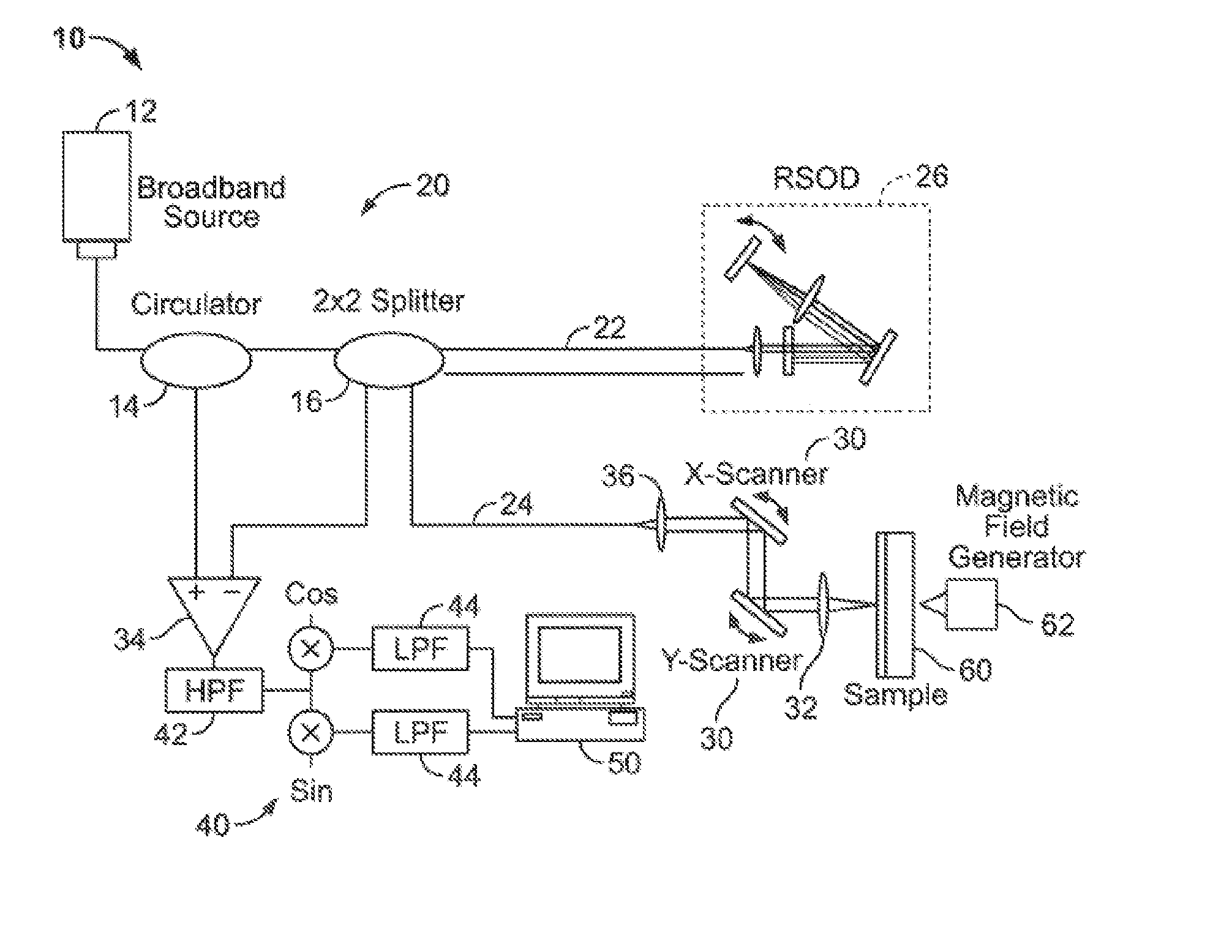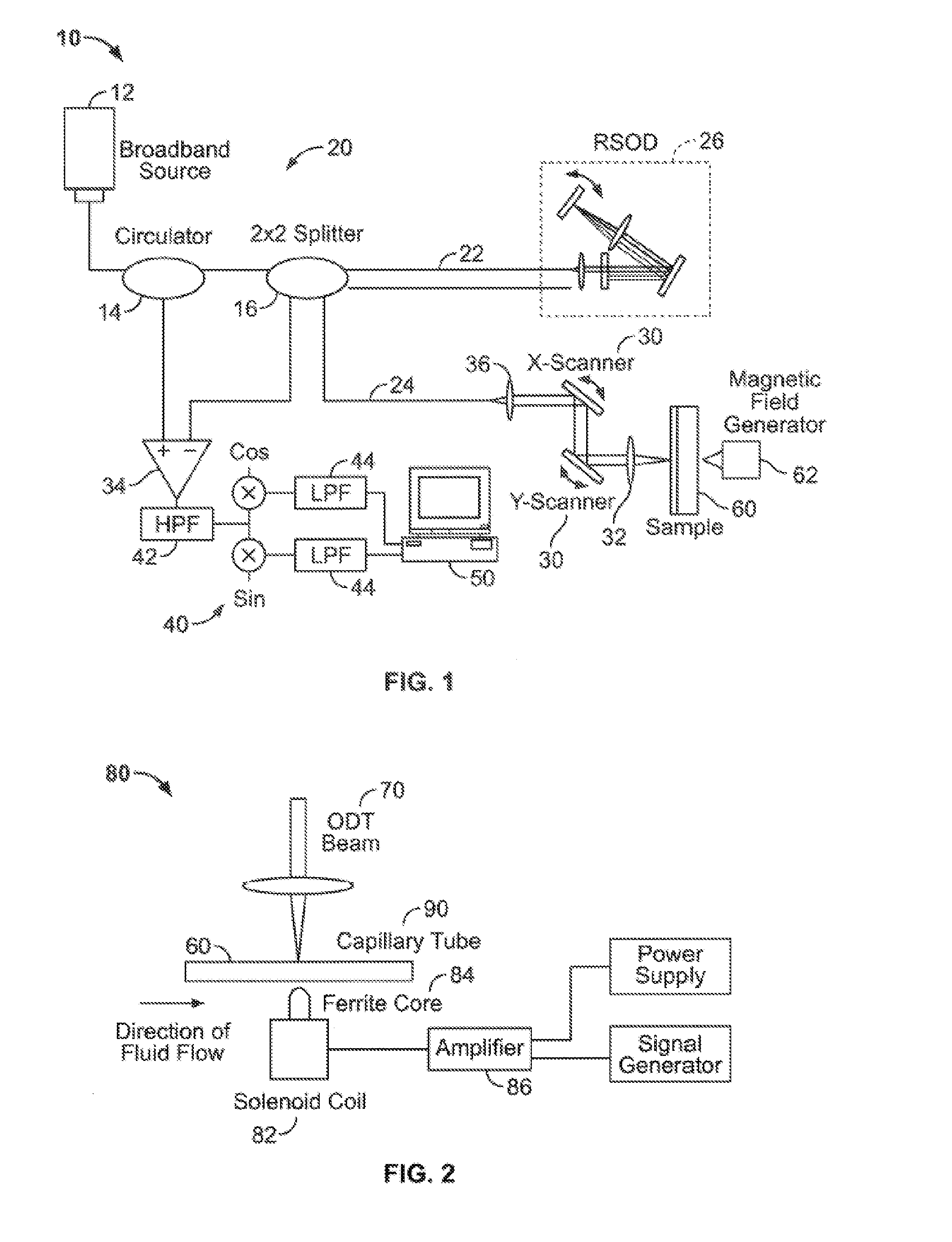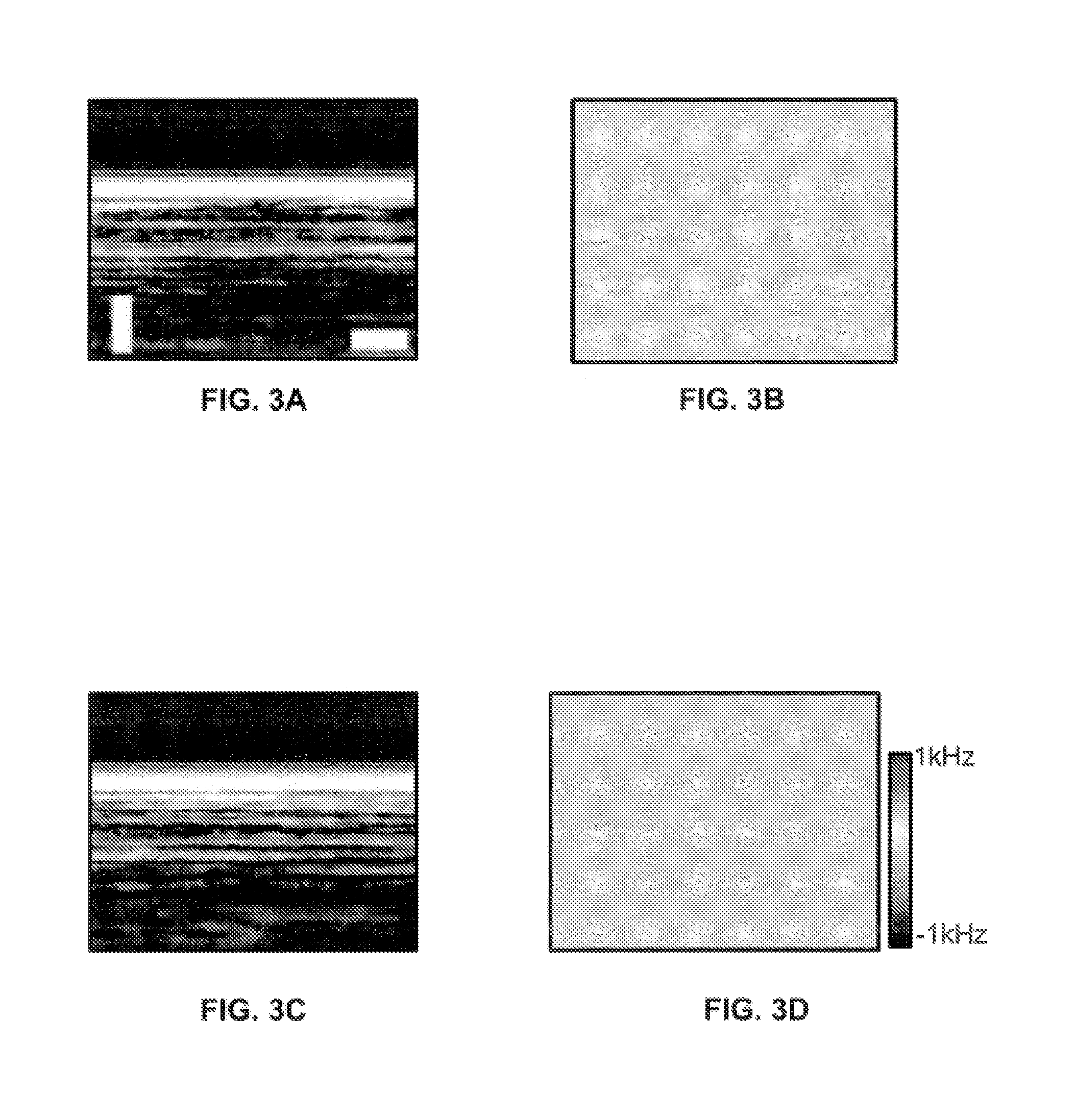Hemoglobin contrast in magneto-motive optical doppler tomography, optical coherence tomography, and ultrasound imaging methods and apparatus
a magnetomotive and contrast technology, applied in the field of medical diagnostic imaging, can solve the problems of limited axial scanning speed and spatial resolution, difficult detection of small vessels with slow flow rate, and easy to be affected by ghosting or ghost images
- Summary
- Abstract
- Description
- Claims
- Application Information
AI Technical Summary
Benefits of technology
Problems solved by technology
Method used
Image
Examples
example 1
MM-ODT Imaging of the Doppler Shift of Hemoglobin by Applying an Oscillating Magnetic Field to a Moving Blood Sample
[0060]M-mode OCT / ODT images of a capillary glass tube filled with a stationary turbid solution with and without an external magnetic field as a control sample were recorded, as shown in FIGS. 3-4. A 750 μm-inner diameter glass capillary tube 200 was placed perpendicularly to the probing beam 70, as shown in FIG. 2. Fluids used for flow studies were injected through the tube at a constant flow rate controlled by a dual-syringe pump (Harvard Apparatus 11 Plus, Holliston, Mass.) with ±0.5% flow rate accuracy. The turbid solution was a mixture of deionized water and 0.5-gm latex microspheres (μs=5 mm−1). The magnetic flux density and its frequency were approximately 0.14 T and 50 Hz, respectively. M-mode OCT / ODT images were acquired for 100 ms per frame. FIGS. 3a and 3b show M-mode OCT and ODT images without any external magnetic field, respectively. The ODT image in FIG. ...
example 2
[0194]A solenoid coil with a ferrite core was used to apply a sinusoidal magnetic field to tissues taken from the liver of an ApoE− / − knockout mouse. One mouse was loaded with magnetic nanoparticles one week before imaging while an unloaded mouse served as a control. FIG. 11A shows a solenoid drive signal (top) and optical pathlength change (bottom) observed in mouse loaded with nanoparticles. FIG. 11B shows a solenoid drive signal (top) and optical pathlength change (bottom) observed in control mouse (no nanoparticles). These data demonstrate that iron oxide particles that have been ingested by macrophages in livers and spleens of the mice. Moreover, the particles have put in motion with a magnet and detected with differential phase OCT using the systems and methods described herein.
[0195]To calculate magnetic field strength a finite element method (FEM) can be used. Maxwell equations subjected to certain boundary conditions can be used to solve low-frequency magnetostatic problems...
example 3
[0210]Colloidal suspensions of SPIO nanoparticles are tissue-specific MRI contrast agents approved by the United States Food and Drug Administration (FDA) for human use in 1997. SPIO particles are also known as Ferumoxides or AMI-25 and their trade name is Feridex® I.V. (USA) and Endorem® (EU). Mean core diameter of these particles is 20 nm and total aggregation diameter is about 100 nm. SPIO nanoparticles comprise nonstoichiometric magnetite crystalline cores, iron, and dextran T-10 coating that is used to prevent aggregation and stabilization in the liver. 80% of injected dose of SPIO nanoparticles accumulate in tissue based macrophages (Kupffer cells) due to the relatively short blood half life compared to ultrasmall SPIO nanoparticles. Uptake of SPIO nanoparticles by macrophage cells is directly proportional to the intravenous injection (IV) concentration, blood half life, and core size.
[0211]To evaluate magnetic force on superparamagnetic (SPIO) nanoparticles, magnetic potentia...
PUM
 Login to View More
Login to View More Abstract
Description
Claims
Application Information
 Login to View More
Login to View More - R&D
- Intellectual Property
- Life Sciences
- Materials
- Tech Scout
- Unparalleled Data Quality
- Higher Quality Content
- 60% Fewer Hallucinations
Browse by: Latest US Patents, China's latest patents, Technical Efficacy Thesaurus, Application Domain, Technology Topic, Popular Technical Reports.
© 2025 PatSnap. All rights reserved.Legal|Privacy policy|Modern Slavery Act Transparency Statement|Sitemap|About US| Contact US: help@patsnap.com



